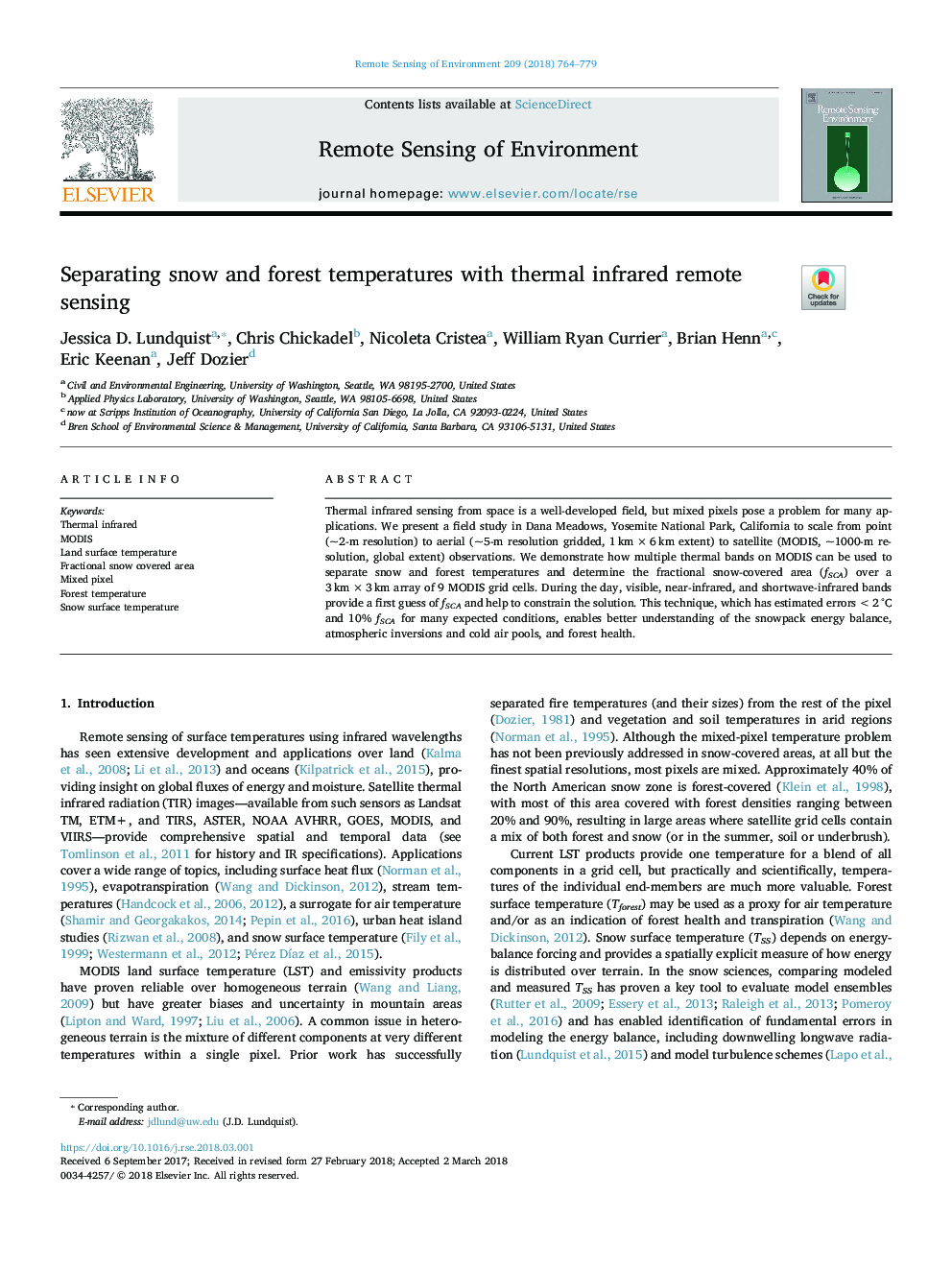| Article ID | Journal | Published Year | Pages | File Type |
|---|---|---|---|---|
| 8866678 | Remote Sensing of Environment | 2018 | 16 Pages |
Abstract
Thermal infrared sensing from space is a well-developed field, but mixed pixels pose a problem for many applications. We present a field study in Dana Meadows, Yosemite National Park, California to scale from point (~2-m resolution) to aerial (~5-m resolution gridded, 1â¯kmâ¯Ãâ¯6â¯km extent) to satellite (MODIS, ~1000-m resolution, global extent) observations. We demonstrate how multiple thermal bands on MODIS can be used to separate snow and forest temperatures and determine the fractional snow-covered area (fSCA) over a 3â¯kmâ¯Ãâ¯3â¯km array of 9 MODIS grid cells. During the day, visible, near-infrared, and shortwave-infrared bands provide a first guess of fSCA and help to constrain the solution. This technique, which has estimated errors <2â¯Â°C and 10% fSCA for many expected conditions, enables better understanding of the snowpack energy balance, atmospheric inversions and cold air pools, and forest health.
Related Topics
Physical Sciences and Engineering
Earth and Planetary Sciences
Computers in Earth Sciences
Authors
Jessica D. Lundquist, Chris Chickadel, Nicoleta Cristea, William Ryan Currier, Brian Henn, Eric Keenan, Jeff Dozier,
